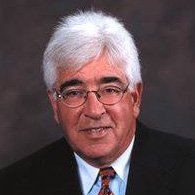Avoiding the Pitfalls of Dental Practice Transitions – Part Five
September 21, 2011
A few posts ago, I discussed strategies on how to successfully purchase a dental practice from a retiring doctor where the buyer was essentially going to be the “replacement”. The new doctor in that role would retain the staff and occupy the existing facility. But purchasing a dental practice from a retiring doctor can also be a great way to exponentially grow and add to your existing dental practice. I did this three separate times in my clinical career, and the return on investment was always more than 100% in the very first year! I wish I could say the same for my returns in the stock market. I believe the reason that the return on investment was so positive was for the following reasons.
1. Associate dentist — when I acquired these practices, I had my associate actually work in and maintain the purchased location for 12 to 18 months. That way the patients were comfortable returning to familiar surroundings with staff members they knew and trusted. Nothing had changed for them except the doctor providing dental treatment. They did not have to immediately travel to a new location. They were gradually transitioned over to our office.
2. Geography — the acquired practices were within 3 to 4 miles of my office. It would not be realistic to expect the same level of patient retention if the acquired doctors practice was not close by.
3. The size of my office — because I had enough treatment rooms, it was easy to absorb all of these new patients as they were gradually transferred. In my experience, the biggest impediment to success or growth is the lack of a proper facility. So you have to be prepared to handle the increased patient flow.
4. Economies of scale — once the old facility was closed down, it greatly reduced the overhead. One location instead of two, and eventual consolidation of staff. Patient relationships had now been established and strengthened over the 12 to 18 months by my associate, and thus patient retention was excellent even with the move to our main office.
I often see situations where a doctor wants to bring on an associate as part of a long term exit strategy, but there are not enough patients in the practice to keep the associate busy more than one or two days per week. The type of acquisition that I describe above eliminates that problem and gets the associate very busy very quickly.
Next post — another twist for acquiring an existing dental practice.
Avoiding the Pitfalls of Dental Practice Transitions – Part Four
September 7, 2011
Selling your dental practice is a complex business event with many emotional and economic issues coming into play. The truth is that hopefully you are only going to do this once – so you better do it right in order to get maximum value. Probably the hardest part is to make the actual decision to sell. But once you are ready, it is essential to conceptualize a detailed plan of action, and that plan may extend for 18 to 24 months.
Don’t start telling patients that you are thinking about retiring. You don’t want to give any patient a reason to leave prematurely. If asked, your answer should be “I love what I do and have no plans at the moment to stop.”
Don’t discuss your retirement plans with staff. There is no way to control what comes out of their mouths, and they could unwittingly be undermining you.
Don’t slow down. Keep to the same weekly work schedule. You should be able to suck it up and work hard knowing that the end is in sight. The value of a practice is time weighted using collections from the past three years. The performance data from the current year is weighted three times more than what happened two years ago. So if you slow down and work less, you are going to be severely penalized. Value is based on the present and not on a glorious history.
Give the office a facelift. Paint, paper, carpet, ceiling tiles – maybe some new reception room furniture. This is relatively inexpensive. You certainly don’t want your practice to look tired and dated when you go to sell.
A big factor in valuation is the size of the patient base. How many patients do you have will be one of the first questions asked. My definition of an active patient is someone who has a scheduled appointment. So make a concerted effort to re-activate every patient that has been seen in the past 24 months and get them an appointment for continuing care. In every practice that I have ever coached, there is a large practice “within your practice” with whom you have lost contact. It is a lot of work – but will be time well spent.
Don’t go crazy with updating software and technology in anticipation of a sale. These are expensive purchases, and since you will need to sell your practice debt free, you will not have enough time of recoup the value. And there is no guarantee that the buyer would be happy with your choices. Instead of a positive, it could turn out to be a negative.
If you adhere to these suggestions, I am comfortable – especially in this current seller favored environment – you will get maximum value for your practice.

